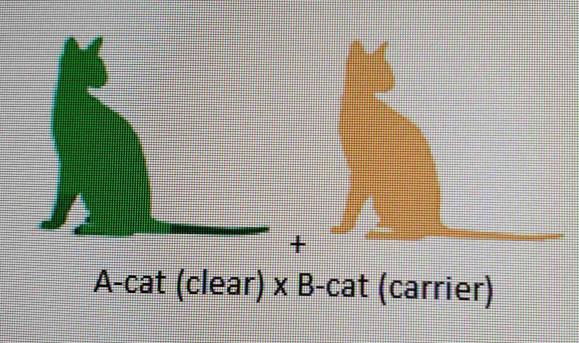PROGRESSIVE RETINAL ATROPHY (PRA) IN SIAMESE AND RELATED BREEDS

June 2011 - The FIFe Health & Welfare Commission has updated the Appendix I for the Breeding & Registration Rules on Recommended genetic tests before breeding. Now there is a PRA DNA-test applicable for Cat. IV cats, it's highly recommended that breeders test their cats. The Ophthalmic examination is listed in the new Appendix II - Obligatory and recommended health examinations.
It’s not recommended - and in some countries even prohibited by law - to breed with affected cats. Don’t eliminate all carriers from your breeding programme, but breed them to cats which are tested and negative for the mutation.
Look at it from the bright side: it is a recessive disease and there is a DNA test available to assist owners and breeders in
identifying affected and carrier cats. These tests use DNA collected from buccal swabs. Breeders can use these tests as
tools to avoid breeding new affected kittens.
DNA testing Laboratories:
- Veterinary Genetics Laboratory University of California, Davis, USA
- Animal DNA Testing, Melbourne, AUS
- Langford Veterinary Services, GB
- Biofocus, DE
- Laboklin, DE
- Dr. Van Haeringen Laboratorium, Wageningen, NL
Source: VGL (text) and www.siames.se (pictures)
FIFe Breed Council for Siamese, Balinese, Oriental Shorthair & Oriental Longhair Cats www.fife-sia-bal-osh-olh-bc.info
In Siamese and related breeds, an inherited late-onset blindness condition has been identified and is characterized by
progressive degeneration of the photoreceptors (rods and cones) in the retina. This disease has been designated "rdAc".
Cats affected with this form of blindness have normal vision at birth, with degeneration first detected by
electroretinographic (ERG) exam at about seven months of age. Vision loss progresses slowly and is variable, with most cats becoming blind by usually 3-5 years of age. There is no treatment available for the condition. This is an autosomal
recessive condition, thus the disease is not associated with gender and two copies of the mutation are required for the cats to lose their vision. Carriers, cats that have one copy of the mutation, are not affected and have normal vision.
A single nucleotide mutation in the gene called CEP290 produces a defective protein which is associated with this
progressive retinal atrophy (PRA) in the cat. In addition to Abyssinian, Somali and Ocicat, a survey of 43 cat breeds showed presence of the CEP290 mutation in many other breeds including, American Curl, American Wirehair, Bengal, Balinese/Javanese, Colorpoint Shorthair, Cornish Rex, Munchkin, Oriental Shorthair, Peterbald, Siamese, Singapura and Tonkinese. The high frequency of the CEP290 mutation in Siamese (about 33%) and related breeds (Oriental Shorthair, Balinese/Javanese, Colorpoint Shorthair, Peterbald) poses a significant health risk in the Siamese breed group.











